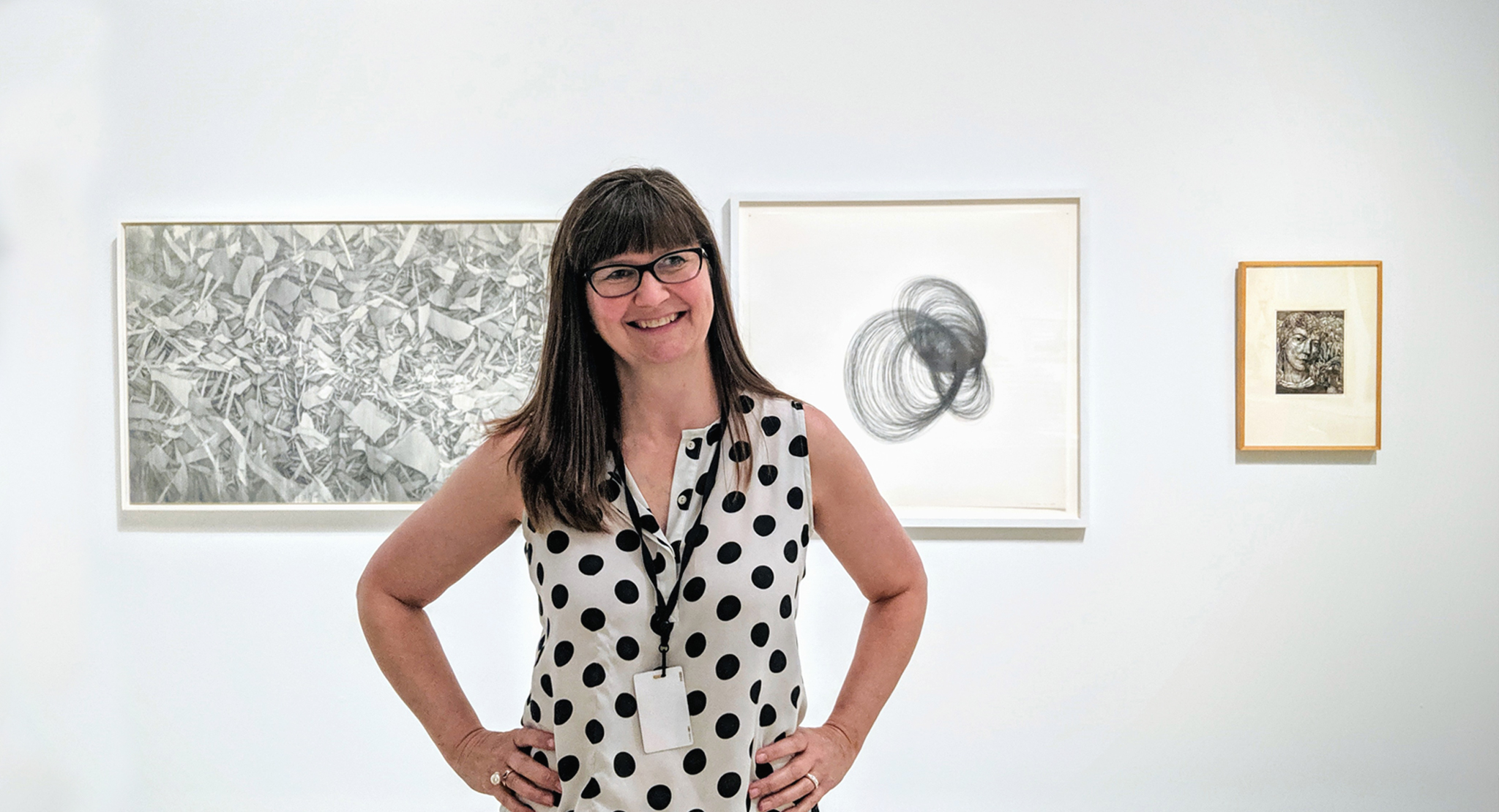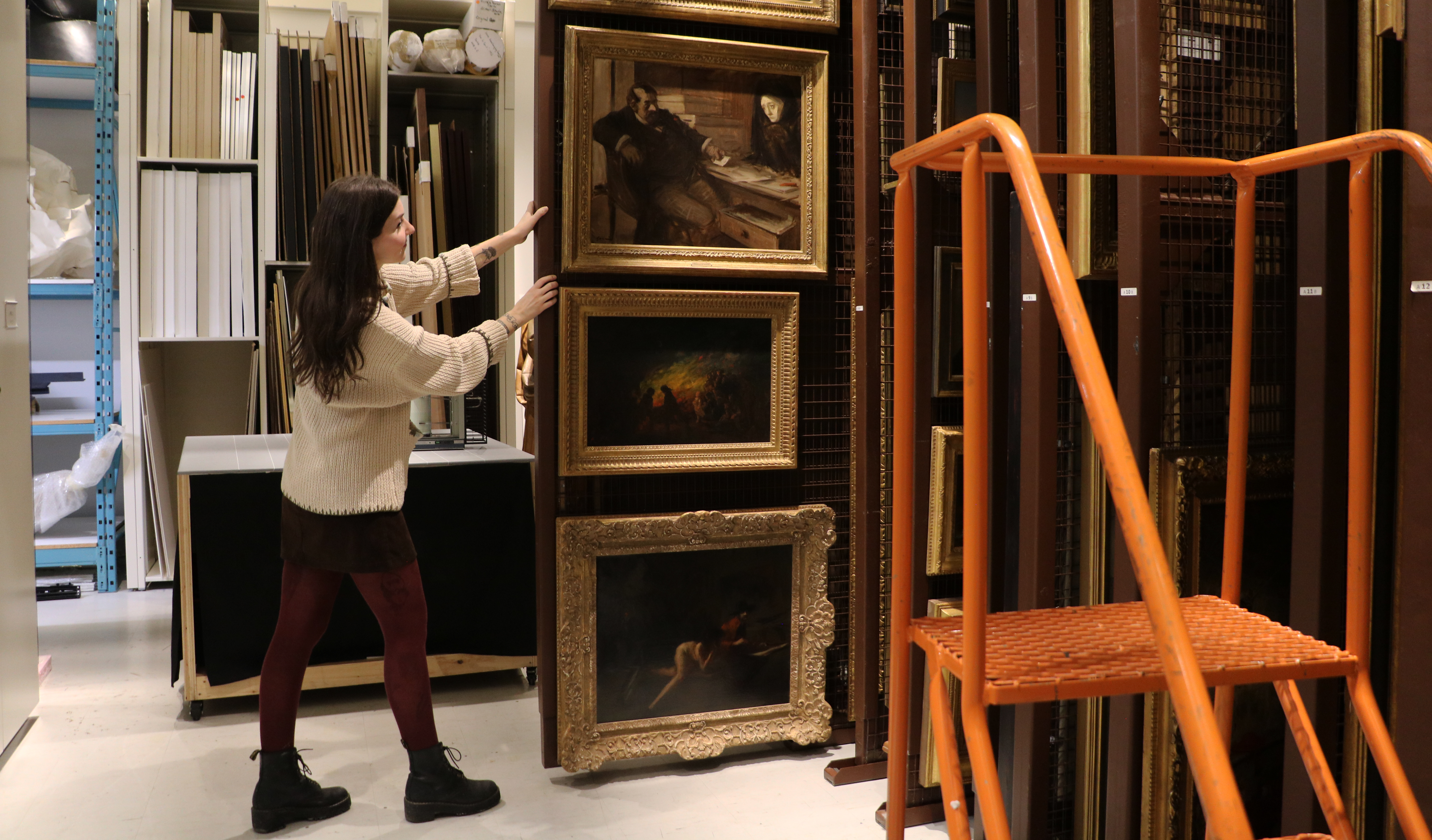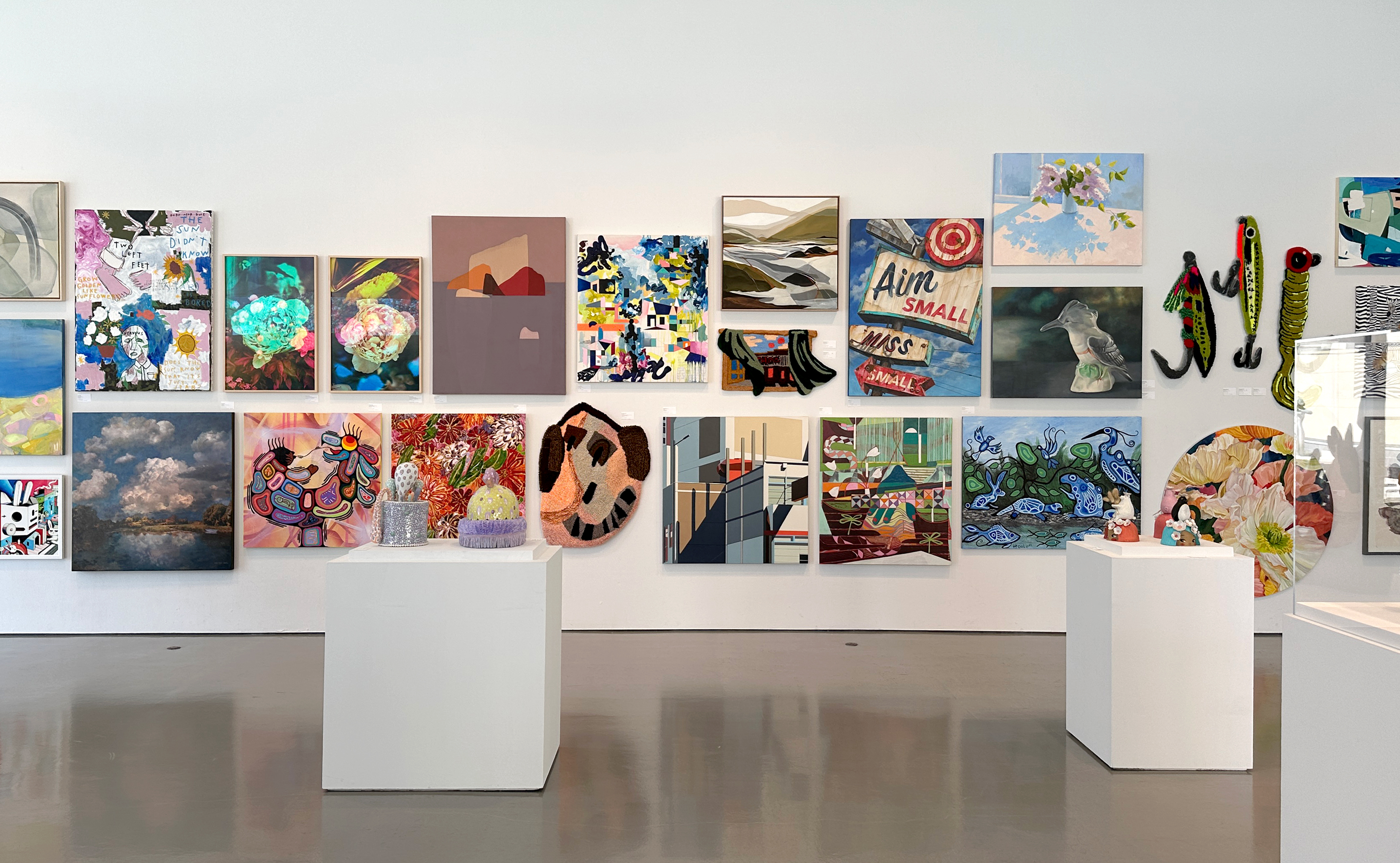Tobi Bruce is the Director, Exhibitions and Collections & Senior Curator here at the Art Gallery of Hamilton. Working with public art collections for over twenty years, Tobi’s most-recent curated exhibition is The Collection Continues: A Quarter Century of Collecting, which opened June 21 alongside THIS IS SERIOUS: Canadian Indie Comics, This is Moving: Illustration on Screen, and My Back Pages: The Art of Zines and Indie Publishing.
I sat down with Tobi to discuss the AGH’s position within Hamilton’s many communities, and the role of both our collection and exhibitions in engaging a wide range of audiences across the city.
Connor: To start off, I’m curious about your relationship to Hamilton and your place here, as someone not born here, but who, nevertheless, made your home and career in Hamilton.
Tobi: Well I was born in Montréal and have lived in Kingston, Ottawa, Toronto, and finally Hamilton. Of all those places, Hamilton has always felt the most like home to me. It reminds me most of Montréal because it’s a place that is extremely comfortable in its own skin. There’s a strong sense of who we are as a city. I have always found it to be a very open place and from the moment I arrived, I felt very welcome here. Within the first few years, I kind of knew Hamilton was home and feel really grateful to live, and be able to make a living, here.
Connor: Do you see the AGH’s position in Hamilton as important to making the city home for you and other Hamiltonians? What role does the Gallery play in that process?
Tobi: I think our role in the city is really evolving. While I know that we, as an institution, can’t be all things to all people, we’ve recently made huge strides in changing the complexion of who we are and maybe most importantly, what we want to be. That being said, part of what we’re doing is trying to be a place where everyone feels welcome, where everyone feels that the AGH is a place for them.
Our first commitment needs to be to our communities. We hold a unique position in terms of our size, our collection, and our budget – and for all of those reasons, we have a responsibility to program locally, nationally and internationally, and we have the capacity to do that. So it’s always about finding a balance between those priorities and audiences.
Connor: The fact of our first commitment, like you said, being “to our communities” feels especially important, considering our size.
Tobi: Yes, there’s not just one community but Hamilton needs to be our priority. If people don’t see us or know about us here, we can’t expect others to.
Connor: Do you feel that speaks to the responsibility of our visibility as well? Potential visitors can often feel alienated from us and from the larger Hamilton arts community as a whole.
Tobi: Our job is to make sure people feel comfortable and confident about coming here. I see us as part of the larger cultural ecosystem, which collectively progresses as long as we understand our place in that ecosystem, evolve within it, and support each other. We are constantly learning from all of our colleague institutions. The Hamilton Artists Inc. runs a program for incoming Hamiltonians – an extraordinary program that shows great leadership. I learn from that.
Connor: You mentioned the collection plays a role in how we connect to our communities – what role is that?
Tobi: This collection is a huge source of pride for this community, but there are large portions of the population that have no connection whatsoever to it. When building it strategically, we need to keep all of our communities in mind. It’s a settler collection, that’s its history. Our job is to look critically at that collection today, identify gaps, and make changes. Recently, the exhibition Speaking for Herself called out some of these challenges and shortcomings. We need to do that work in other areas as well – artists of this region and BIPOC artists represent our top priorities in terms of future collection building.
Connor: Do you feel there’s room for arts institutions to discuss the process of their collecting, for example in relation to the ownership of Indigenous art in a settler collection?
Tobi: Absolutely. Looking critically at our own collection is our responsibility. We know where we’re thin, but we face the reality of our own resources as well, as the majority of the collection is built by donation. The collection exhibitions present a kind of baseline identity or character, but with a view to being as transparent as possible about the extremely complex issues around collections and presenting them. In the last few years, we’ve tried to be as strategic as possible, acquiring works by artists like Meryl McMaster, Shelley Niro, and Divya Mehra; but we still have a long way to go.
Connor: Speaking about the collection in relation to the opening of The Collection Continues, but also in relation to three very different exhibitions opening in THIS IS SERIOUS, This is Moving, and My Back Pages, what do you see as the relationship between these two exhibition types, or the need for both in Canadian art?
Tobi: One thing we try to do when programming is to bring in exhibitions that fall outside the traditional parameters of museum exhibitions. So, we’ve done origami and quilts and now we have comics, animation, zines, fashion—although, the last one, fashion, is being considered globally. But we’re looking to topics and art forms that fall outside of traditional expectations, while also displaying work from our collection that similarly touch on broad social-political issues that we experience today.
Ultimately, we want to create as many access points as possible. The last thing we want is for someone to feel uncomfortable walking into a museum because they think they need to have an art history degree or be super familiar with contemporary art forms. The hope and intent is that an interest in a current issue (environment, feminism, etc.) provides a point of access to coming here. In terms of our demographics, we also hope to cultivate a younger audience – which is something we hope the comics show will do very nimbly.
Connor: To finish off, let’s talk briefly about THIS IS SERIOUS: Canadian Indie Comics, as the exhibition that just headlined our Summer Opening. The title of the show plays with the notion of an art form establishing itself as “serious” within the museum context, which in itself seems to provide an interest spark or access point for those less aware of indie comics.
Tobi: I think the curators of the show, Joe Ollmann and Alana Traficante, have done something pretty extraordinary with this exhibition. There has never been an exhibition of this scale, of this material, in another Canadian institution. It is truly a landmark event, and it reflects so coherently and beautifully the philosophy of what we’re trying to do. It is critically curated, visually-stimulating, accessible material, presented in a really engaging installation. It all comes together in this one project; we’re very proud to have generated it. You can always feel when something is right, when it works. And when that happens you need to understand why and try and figure out how to keep doing it.


